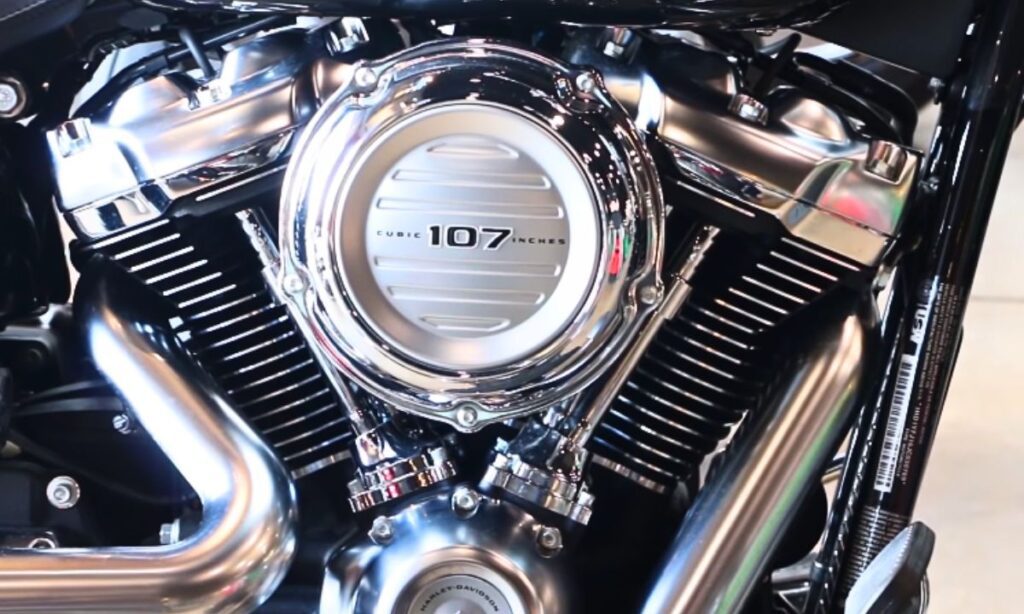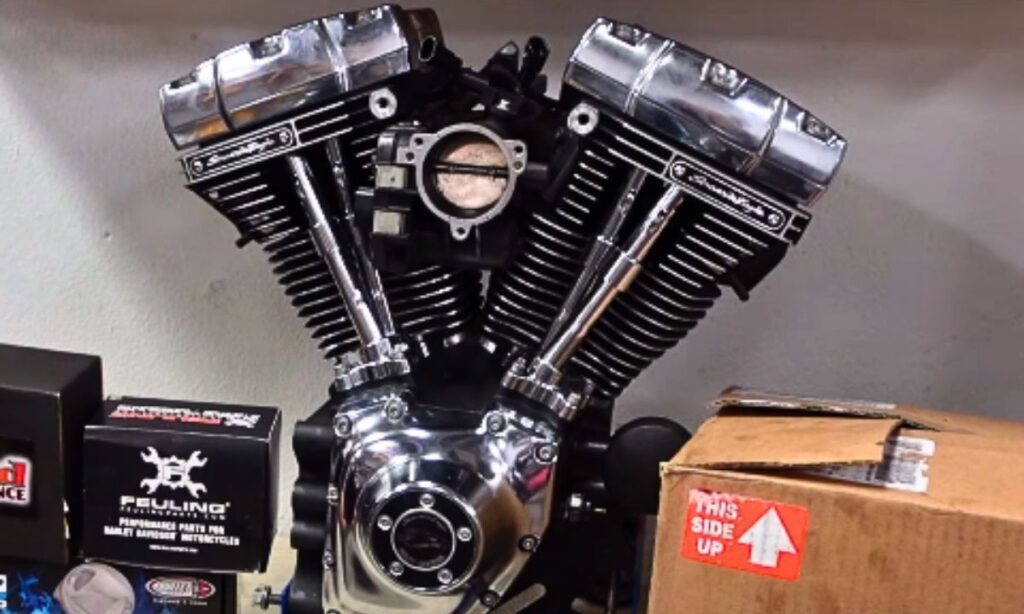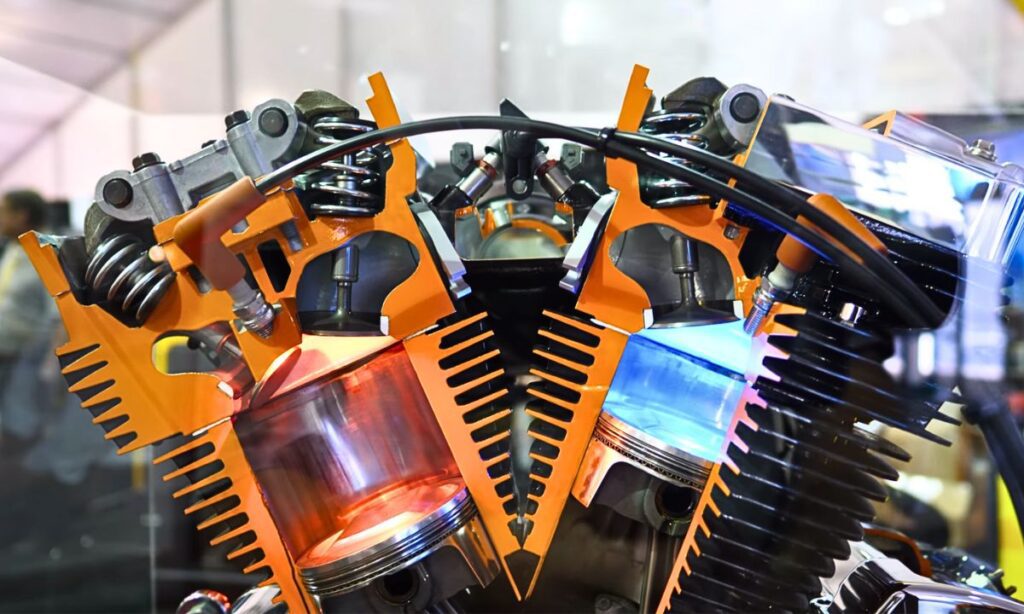As the sun rises, I find myself standing in my garage, staring at my Milwaukee-Eight motor, the heart of my beloved Harley-Davidson.
I can’t help but marvel at the raw power it has delivered mile after mile, the roaring soundtrack to my many road adventures.
As I wipe down the chrome, I ponder a question I’ve been asked countless times: “What’s the life expectancy of this beauty?”
You see, there are a lot of myths and stories out there about the Milwaukee-Eight.
But let me tell you, from my years of riding, wrenching, and pure love for this machine, the reality of its longevity.
Milwaukee 8 Engine Life Expectancy
The Milwaukee 8 Engine, a powerhouse produced by Harley-Davidson, is renowned for its longevity and durable performance.
It’s a testament to the brand’s commitment to crafting engines that stand the test of time.
With proper maintenance and care, the Milwaukee 8 Engine’s life expectancy can easily surpass 100,000 miles.
Factors such as riding style, frequency of use, and adherence to service intervals significantly influence the engine’s lifespan.

Factors Influence Life Expectancy
The life expectancy of a Milwaukee 8 Engine is influenced by several key factors.
Among the most significant are regular maintenance, prompt oil changes and spark plug replacements, and the use of high-quality fuel.
The engine’s lifespan can be extended by avoiding harsh driving conditions and high-speed, aggressive driving.
1. Maintenance Practices
Regular maintenance is a crucial factor that influences the life expectancy of the Milwaukee 8 engine.
Well-executed maintenance practices ensure that the engine runs optimally, reducing the chances of unexpected breakdowns and extending its lifespan.
Routine oil changes are essential for the engine’s health. The oil lubricates the engine’s components, reducing friction and preventing overheating.
It’s recommended that the oil, along with the oil filter, be changed every 5000 miles or earlier if the oil appears dark in colour or contains debris.
Apart from this, regular checks and adjustments of the valves can prevent unnecessary wear and tear, while prompt replacement of worn-out spark plugs can ensure proper combustion.
Similarly, air filter maintenance is essential to guard the engine against dirt and debris, which can drastically reduce the engine’s life if left unchecked.
Lastly, keeping fuel injectors clean ensures fuel burns efficiently, thereby increasing the engine output as well as the engine’s longevity.
These maintenance practices, done consistently and correctly, substantially enhance the Milwaukee 8 engine’s life expectancy.
2. Manufacturing Quality
Manufacturing quality is a pivotal factor that directly influences the life expectancy of the Milwaukee 8 engine.
Superior manufacturing processes ensure that each component of the engine is crafted to precise specifications, providing optimal performance and durability.
State-of-the-art machinery and rigorous quality control protocols are utilized to eliminate errors or defects, thereby enhancing the engine’s reliability and longevity.
Each Milwaukee 8 engine undergoes stringent testing before it leaves the manufacturing facility, ensuring it meets the high standards set by the company.
High-grade materials are used in the manufacturing process to withstand the rigours of everyday use and extreme conditions.
3. Riding Habits
Riding habits significantly influence the life expectancy of the Milwaukee 8 engine.
The way a motorcycle is ridden can either prolong or shorten the life of its engine.
For instance, aggressive riding practices, such as high-speed riding and rapid acceleration, can put undue stress on the engine, accelerating wear and tear.
In contrast, maintaining a consistent speed within the engine’s optimal range can contribute to increased engine longevity.
Regular warm-up periods before heading out, especially in cold weather, enhance oil circulation and minimize engine strain.
Furthermore, avoiding overloading the motorcycle and adhering to the recommended payload can prevent unnecessary engine strain.
Thus, adopting conscientious riding habits is critical to maximizing the lifespan of a Milwaukee 8 engine.
4. Environmental Factors
Environmental factors significantly impact the life expectancy of a Milwaukee 8 engine.
These include weather conditions and the quality of the air the engine breathes.
For instance, if the engine is regularly exposed to extreme temperatures, either very hot or very cold, it can degrade much quicker.
The engine’s cooling system could be overwhelmed in hot climates, leading to overheating and potential damage.
On the other hand, cold climates can make oil viscous, inhibiting smooth circulation and leading to wear and tear.
Air quality is another environmental factor to consider. Engines operating in areas with high levels of air pollution, particularly with a high concentration of particulates, may cause accelerated wear due to tiny particles that can infiltrate the engine’s interior.
So, keeping your Milwaukee 8 engine in an environment with moderate temperature and clean air can significantly enhance its lifespan.
Common Issues with Milwaukee 8 Engines
The Milwaukee 8 engines, despite their popularity, are not without their share of issues.
Common problems include excessive heat generation, which can lead to discomfort for riders on long trips, and oil pump issues.
The latter problem causes increased wear and tear on the engine’s internal components.
Improper tuning can also lead to performance problems, making it vital for riders to ensure engines are tuned properly for optimal performance.
1. Oil Pump Issues
One of the most prevalent issues with Milwaukee 8 engines pertains to the oil pump.
The oil pump is a critical component, ensuring optimal lubrication of engine parts and maintaining appropriate engine temperatures.
Failure of the oil pump can lead to serious engine damage.
The oil pump in some Milwaukee 8 engines has been noted to show signs of premature wear.
This wear can be caused by the metal debris in the oil, leading to reduced pump performance.
Symptoms of this issue can be low oil pressure, abnormal engine noise, and, in severe cases, complete engine failure.
If you suspect an oil pump issue, it’s important to take immediate action. Start by checking your oil for metal shavings, a telltale sign of an issue.
Then, verify the oil pressure using an oil pressure gauge. If the pressure is lower than the standard 10 PSI at idle or fails to reach 30-38 PSI at 2000 RPM, it’s time to take a closer look at your oil pump.
To inspect the oil pump, remove it from the engine and check for signs of wear or damage, such as scoring on the housing or worn-out gears.
If you discover any signs of wear or damage, replace the oil pump immediately.
Always use an upgraded aftermarket oil pump to avoid similar issues in the future.
Ensure your engine oil is clean and free from metal debris before installing the new oil pump.
2. Cooling System Problems
One common issue with Milwaukee 8 engines is reported to be its cooling system.
The cooling system is critical to any machine as it regulates the engine’s temperature and prevents overheating.
For Milwaukee 8 engines, some users have reported that the engine is running hotter than normal, especially in slow-moving or stop-and-go traffic.
A possible cause for this could be a malfunctioning thermostat that isn’t allowing the coolant to flow properly.
A clogged radiator could also be a contributing factor, blocking the coolant from dissipating the heat efficiently.
In both cases, the engine temperature can rise, resulting in sub-optimal performance and potential long-term damage.
To troubleshoot and fix these issues, start by checking the thermostat operation. If it’s faulty, replace it.
Then, inspect the radiator for any blockage. Using a radiator flush might be helpful to clear any debris.
If problems persist after these steps, it would be advisable to consult with a professional mechanic.
What Is The Average Lifespan Of Milwaukee 8 Engine?
On average, with proper maintenance and care, a Milwaukee-Eight engine can last for 100,000 to 200,000 miles.
In order to ensure the engine reaches its expected lifespan, certain measures should be taken.
Regular oil changes using the recommended 5W-50 synthetic oil should be done every 5,000 miles or every four months.
Air filter cleaning or replacement is crucial for maintaining optimal engine performance and should be done every 10,000 miles.
Periodic inspections for wear and tear, particularly in the valve train area, should not be overlooked.
However, the cooling system, an integral part of the Milwaukee-Eight engine, requires proper attention.
A well-maintained cooling system will help prevent overheating and extend the engine’s life.
Lastly, conscientious riding can also prolong the lifespan of the engine. Avoiding abrupt acceleration and extreme high-speed riding will reduce the strain on the engine.
While the Milwaukee-Eight engine is designed to handle all riding conditions, it will last longer with a smoother and more controlled riding style.


Talha Younas, the brains behind the influential motorcycle-focused website, TwoWheller.com, is a dedicated and passionate advocate for biking culture. Born and raised in a family of motorcycle enthusiasts, his love for two-wheeled transportation was ignited at an early age. His commitment to providing in-depth reviews and helpful tips for riders has established him as a respected figure in the motorcycle community.

